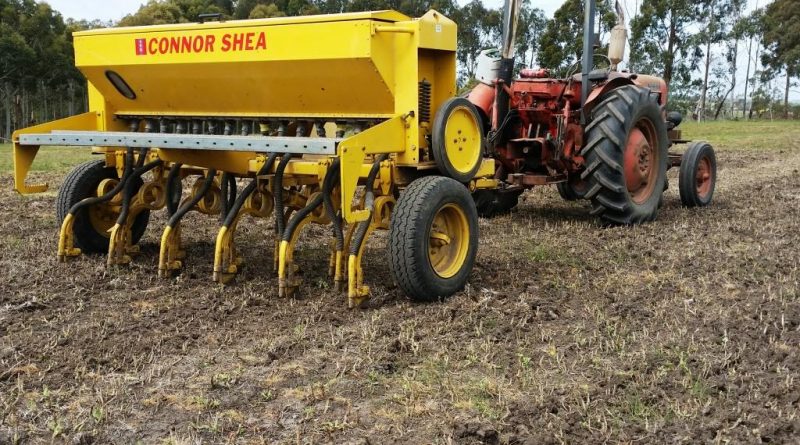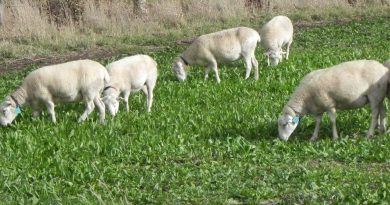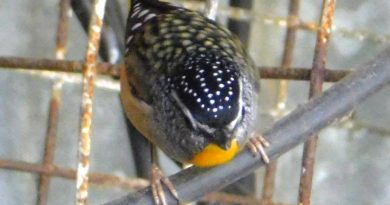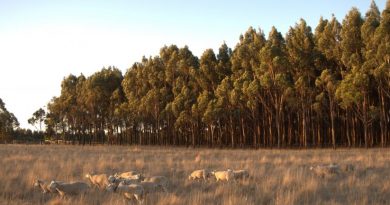Pasture story – sowing multiple perennial species
By Patrick Francis
The story behind one of our newly sown paddocks demonstrates the connections between grazing management, pasture species, soil nutrients, the soil food web, and soil carbon.
The story began in mid-October when relatively new land owners who are keen to change their own farms pasture visited to see what species renovation can do in this district. Their paddocks are dominated by the usual low quality central Victorian medium rainfall district species: Bent grass, onion grass, Sweet vernal, silver grass and Yorkshire fog grass.
I showed the couple a paddock re-sown by direct drilling in May 2017. This is the story:
The paddock the couple inspected in mid-October 2018 has around 4000kg green dry matter per hectare. It was last grazed with ewes and lambs from 27/9/18 to 11/10/18, i.e. 14 days at 80dse/ha. On 27/9 at sheep entry, figure 1 and 2, I estimated there was 4000kg green dry matter/ha, and on 11/10/18, on sheep exit there was around 1200kg green dry matter/ha. This exit figure is what I aim for every grazing, so the plants can recover quickly, even in winter.
So the pasture has regrown from 1200kg green dry matter to 4000kg green dry matter/ha in just 24 days.
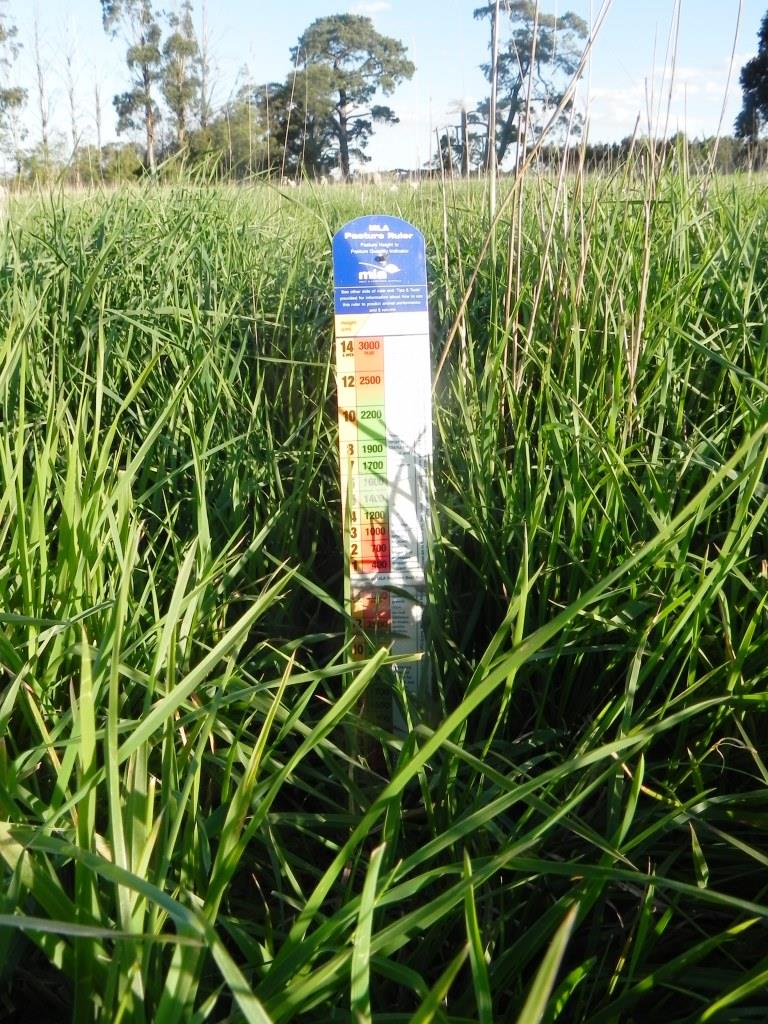
Figure 1: The perennial grasses herbage increased from 1200kg DM/ha to around 4000kg DM/ha in just five weeks over August and September despite September rainfall being the lowest on record for the district at just 16mm (normally 78mm). Note the pasture ruler is actually two rulers taped one on top of the other; pasture height averages around 28cm. Photo: Patrick Francis 27 September 2018.
What is even more remarkable is that September rainfall was a record low for Romsey, just 16mm compared with an average of 75mm. There was no effective rainfall for the two weeks prior to ewes and lambs entering the paddock. By coincidence the day before removing the livestock there was 16mm rain on 10 October. So their removal on 11 October coincided not only with the correct green dry matter residue but also with the grazing management strategy of “rest after rain”. That is where possible grazed paddocks should be rested from grazing after a significant growth producing rainfall.
This demonstrates the ability of a multi-species pasture to regrow a bulk of high quality pasture very quickly, especially after a significant rainfall.
The paddock production for the first 9.5 months in 2018 is interesting:
Dec/Jan, 18 days @46dse/ha weaners = 828dse/ha
Feb, 9 days @ 40dse/ha weaners = 360dse/ha
April, 7 days @ 41dse/ha weaners = 287dse/ha
May/June, 6 days @ 13 dse/ha weaners = 78dse/ha
July, 17 days @ 28 dse/ha weaners = 476dse/ha
August, 11 days @ 28 dse/ha weaners = 308dse/ha
Sept/Oct, 14 days @ 80 dse/ha ewes and lambs = 1120dse/ha
Total 3457dse/ha carried over 290 days to 11 October 2018, i.e. 12 dse/ha.
Weaner lamb growth rates when grazing this pasture averaged 230 grams/day, demonstrating the high quality of the feed.
The multi-species pasture was direct drill sown in May 2017 after the paddock was planted to a brassica forage pasture in October 2016. The species and rates sown with 60kg/ha DAP fertiliser (20% nitrogen, 20% phosphorus) are:
Flecha tall fescue (summer dormant) 3kg/ha
Hummer tall fescue (summer active) 3kg/ha
Stockman phalaris (summer dormant) 1.5kg/ha
Exceltas coloured brome (semi summer active) 3kg/ha
Savvy cocksfoot (summer active) 4kg/ha
Rubitas red clover (summer active) 1.5kg/ha
Tribute white clover (summer dormant) 2 kg/ha
Paradana balansa clover (annual) 3kg/ha
Tonic plantain (semi summer active) 1kg/ha
Choice chicory (summer active) 1kg/ha.
For unidentified reasons the legumes sown have not persisted into the spring 2018. To compensate for the lack of nitrogen fixation I have applied a DAP fertiliser at 100kg/ha after two grazings in winter and spring.
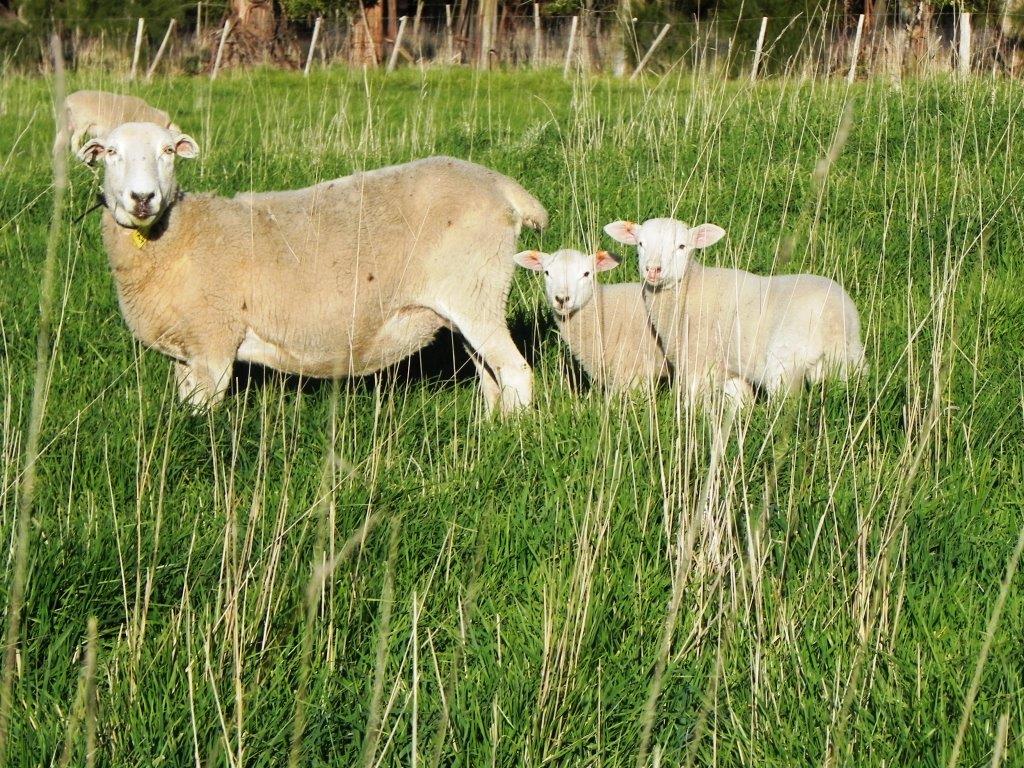
Figure 2: The pasture species mix contains both summer active (year round green) perennial species and summer dormant perennials. Photo: Patrick Francis 27 September 2018.
It is interesting to compare this sowing with the varieties we used in the original renovation in 2001. Back then Porto cocksfoot, Demeter tall fescue, Victorian perennial ryegrass and sub clovers were the species used. While production with cattle was reasonable for a few years (up to 13.5dse/ha), it gradually declined to half this most likely due to shorter rests between grazings which contributed to the cocksfoot and perennial ryegrass decline. The reason why this paddock had shorter rest between grazing (we like to see 6 to 8 weeks) was because all cattle had to pass through when moving from one side of the farm to the other. Stock would spread out quickly on entry and it was difficult to move them on so they were left there for some days before being moved on. A lane way was constructed through it in 2015 which sub-divided the paddock and ensured complete control over each grazing period was in place. By that time the unwanted local grasses Sweet vernal and bent grass had become the dominant species and carrying capacity had declined to 6 – 7 dse/ha.
The direct drill sown pasture had doubled this paddock’s carrying capacity. While the pasture species present could achieve an even higher carrying capacity if desired, our carrying capacity objective is not about maximising production but optimising it to ensure paddock ecosystem functions are also operating at their highest possible level. This means 100% plant litter and crown cover, minimum of 1200kg of dry matter maintained year round, ensuring virtually all rainfall is absorbed into the soil without runoff, the soil food web is protected and enhanced and soil organic carbon level is optimised.
It should be noted that the perennial grass, herbs and legume species planted do require moderate levels of nutrients and soil ameliorant (lime) to maintain productivity and resilience over decades. Their nutrient requirements can be met equally by organic fertiliser such as livestock manures or inorganic chemically produced fertilisers. The key to their effectiveness in retaining pasture production and persistence relies on grazing management, with short duration, high intensity grazing periods leaving a residue of 1200kg dry matter per hectare followed by rest periods determined by rainfall and temperature. In other words the rest from grazing might be eight weeks in mid-winter but only four weeks in mid-spring or during a wet summer.

Figure 3: The pasture was sown by direct drill into sprayed out brassica in May 2017. Photo: Patrick Francis.

